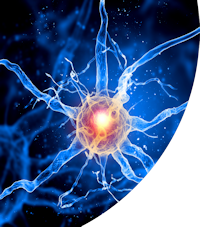
Laser for pain relief has also been used for more than 30 years
Instead of using laser to accelerate processes, laser is now applied for it’s inhibitory effects (Cotler et al. 2016)
In other words we increase the power to slow and stop activity
Chow & Armati (2016) in a review of the available scientific literature said laser can inhibit nerve function in vivo, in situ, ex vivo, and in culture. Laser worked to inhibit nerves in several ways:
- Nociceptor-specific inhibition
- Local conduction block (leading to inhibited translation of pain centrally)
- Changing axonal flow
- Cytoskeleton organization
- Decreased ATP
Conclusions:
“This review provides strong evidence in neuroscience identifying inhibition of neural function as a mechanism for the clinical application of PBM in pain and anaesthesia the changes are reversible with no side effects or nerve damage.”
This review was after the earlier 2011 review (included for reference)
Cotler et al. (2016) looked at the interaction of laser therapy and pain.
“LLLT applied with a sufficient level of intensity causes an inhibition of action potentials where there is an approximately 30% neural blockade within 10 to 20 minutes of application.
The laser application to a peripheral nerve does have a cascade effect whereby there is suppressed synaptic activity in second order neurons so that cortical areas of the pain matrix would not be activated.”
How did laser have this effect?
Laser at higher doses decreases mitochondrial membrane potential (MMP) in DRG neurons and ATP production is then reduced (Cotler et al. 2016, Chow & Armati 2016)
So the lack of ATP led to a neural blockade.
Cotler et al. (2016) went on to explain
“This inhibition of peripheral sensitization not only lowers the activation threshold of nerves but also decreases the release of pro inflammatory neuropeptides (i.e. substance P and CGRP).
In persistent pain disorders this reduction of tonic input to activated nociceptors and their synaptic connections, leads to a long-term down-regulation of second-order neurons.
The modulation of neurotransmitters is a further possible mechanism of pain relief, as serotonin and endorphin levels have been shown to increase following laser treatment of myofascial pain in patients.”
So laser can have short, medium and long term effects.